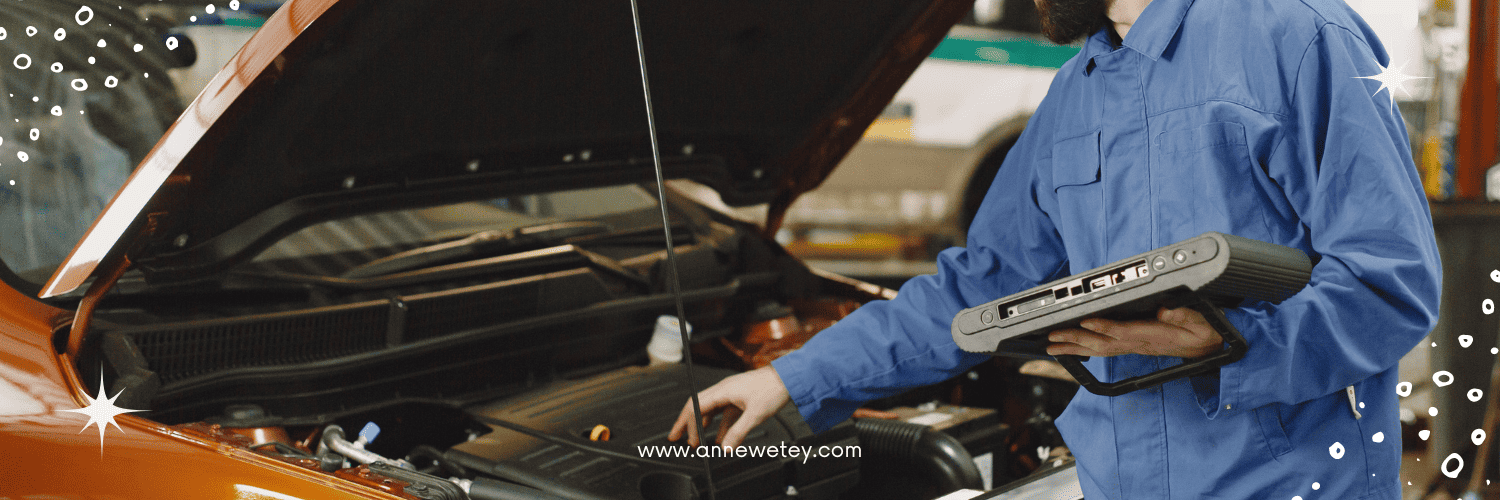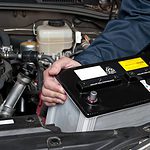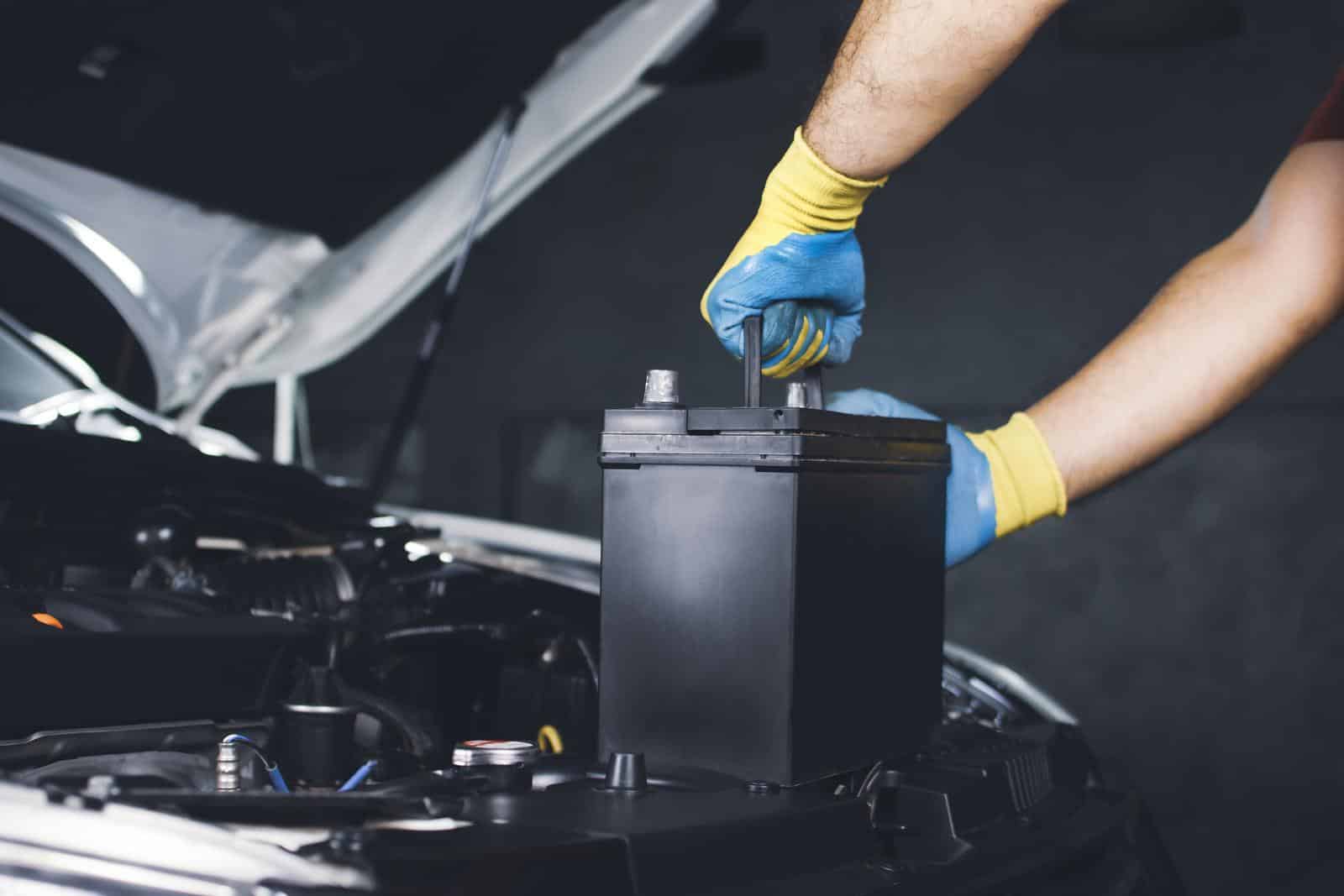How to Charge a Car Battery
Preamble
Most of us have had the experience of getting into our car, turning the key, and nothing happening. It’s a sinking feeling, especially if you’re in a hurry or it’s cold outside. If you are in a hurry, the quickest solution is just to call a tow truck or a friend with jumper cables. Learn How to Jumpstart a Car Battery With Jumper Cables. However, if you have a bit of time, you could charge the battery yourself.
Car batteries are one of the most important parts of a car. They provide the power needed to start the engine and to run the electrical accessories. When the car is turned on, the battery provides power to the starter motor, which turns the engine over and starts the car. The alternator charges the battery while the engine is running. This article doesn’t discuss electric vehicles.
Check out our article on “What Charges a Car Battery?” to get more information about the alternator and charging system of your car.
However, the alternator is only designed to quickly replace the small amount of electrical energy that is lost when the battery is used to start the engine. In most cases, your car alternator is not powerful enough to revive a dead car battery.
A car battery charger is a device that supplies electrical energy to a car battery from your mains electricity or from some external power supply rather than the alternator. It can recharge a discharged battery or maintain a healthy battery when the car is not in use. Charging your car battery is a simple process that anyone can do. By following these steps, you can get back on the road in no time!
In my personal experience of selling batteries for close to 20 years, six out of ten batteries that came back to the shop as “dead batteries” only needed a good charge to go come back to full strength. So, by my count, at least 60% of batteries replaced by auto electricians and mechanics only need a good charge to come back to life. You can reduce waste, protect the environment and save yourself a good chunk of cash by knowing how to charge a battery yourself.
Ideally, anyone who owns a car should know how to charge their own car battery.Don’t charge the battery while your engine is running. Doing so could damage your alternator. You will need to remove the battery from the vehicle to charge it. If you need any help on how to remove and install your battery, read our article on How to Change a Car Battery.
WHY DO YOU NEED TO CHARGE YOUR CAR BATTERY?
_optimize.jpg)
The main reason to charge your car battery is to keep it healthy. A lead acid battery will slowly discharge itself, even if it’s not being used. This is because the lead and acid inside the battery will gradually react with each other and produce electricity. If you don’t charge the battery, eventually the chemical reaction will stop, and the battery will be dead. Your battery may also discharge if you forget to turn off your lights or continue to use your car electronics (e.g., radio, stereo, DVD player) while the engine is off. You may also need to charge your battery if you have a generator, lawn mower or golf cart that is only used occasionally.
Some maintenance-free lead-acid batteries have a state-of-charge (SOC) indicator, also known as a Magic Eye, on top of the battery case.
If the Magic Eye color is:
- Green the battery is fully charged
- Black the battery needs to be recharged
- White the battery is dead
You will need to charge your battery if the Magic Eye color is Black or White. (See our article on Car Battery Green Light, to understand why the Magic Eye on your battery can’t be trusted completely).
COMMON TYPES OF CAR BATTERY CHARGERS?

There are two main types of car battery chargers: trickle chargers and quick chargers. Trickle chargers (sometimes called portable car battery chargers) supply a small amount of current and are used to maintain a healthy battery. Quick chargers supply a large amount of current and are used to recharge a dead battery.
Battery Charger are sold according to their voltage (V) and rate of charge, Amps (A). Some battery types, e.g., AGM or Gel Batteries, require compatible chargers specifically designed to charge them.
Example: You may find a tiny trickle charger rated at 12V and 2Amps which will be excellent for maintaining your battery in good condition if the car needs to be parked for a few months.
Most automotive batteries have a voltage of 12 volts. You can find out the voltage of your battery by looking at the label on the side of the battery. When purchasing a car battery charger, remember: the higher the “Amps” specification, the more powerful it is.
A trickle charger will keep your battery healthy. If the battery on your car, generator or golf cart is usually idle and you’re looking to maximize your battery life, a trickle charger is the way to go. These types of chargers are ideal for older devices because they won’t harm the battery like a quick charger might.

A quick car battery charger is a faster way to charge a bad battery. These chargers are designed to charge a car battery in a short amount of time.
BEFORE YOU CAN START TO RECHARGE YOUR BATTERY

In order to charge your car battery, you’ll need a few things:
- A charger that is compatible with your car battery (output 12V DC),
- Access to an electrical outlet
- A well-ventilated area around the battery that is clear of any flammable materials.
- Finally, you will need to have a pair of safety goggles and gloves.
You may also need a set of wrenches, pliers and a screwdriver to remove and re-install the battery on your vehicle. A basic multimeter may also be helpful in monitoring the voltage of your battery. However, most modern battery chargers will have an inbuilt voltmeter.
Safety
When you are working with batteries, it is important to be aware of the potential dangers. Batteries can release explosive hydrogen gas when they are being charged, so make sure that the area around the battery is well ventilated. If you notice a strong smell, open a window or door to allow fresh air into the room. Batteries contain highly corrosive Sulfuric Acid, so make sure you wear safety glasses and gloves to prevent injury to your skin and eyes.
Temperature
Batteries will become warmer as they are being charged. However, if the battery becomes hot to the touch, disconnect the charger and allow the it to cool down before continuing.
Corrosion

Finally, batteries can cause corrosion if they leak. If you notice any corrosion on the terminals of the battery, clean it off with a cloth soaked in vinegar or baking soda. Battery acid can damage the ground where you are charging and any metal object or surface it comes into contact with, including the vehicle itself. Check out our article on How to Properly Clean Car Battery Corrosion.
TIP: Place some cardboard, old newspapers or plastic underneath the battery while charging to prevent damage to your work surfaces.
STEP-BY-STEP INSTRUCTIONS ON HOW TO CHARGE YOUR CAR BATTERY?

Charging a car battery is a pretty simple process, but you must read the instruction for the particular charger that you have. Some chargers will allow you to specify the voltage, the rate of charge and even a timer to indicate how long you want the battery to be charged.
Here is a step-by-step guide on how to safely and quickly charge your car battery:
- Park your car in a well-ventilated area and turn off the engine.
- Take off the negative (-) terminal (Black Cable) from the battery first, then the positive (+) terminal (Red Cable).
- Remove the battery from the engine bay of your car and place it close to your battery charger.
- If you have a battery that can be opened, check and top up the electrolyte levels with distilled water before proceeding.
- Attach the RED clamps (positive) of the car battery charger to the positive terminal (+) of the battery.
- Attach the BLACK clamps (negative) of the charger to the negative terminal (-) of the battery.
- Turn on the charger and set it to the correct voltage for your battery. For most car batteries, this is 12 volts.
- Charge the battery for about 30 minutes, or until it is fully charged. Most modern chargers will have a state-of-charge indicator/voltmeter, which will tell you when the battery is fully charged.
- Monitor the charging process and make sure that the battery doesn’t overheat.
- Disconnect the charger and reconnect the terminals of the battery in reverse order: positive cable first, then the negative cable.
- Start your car and let it run for a few minutes to make sure everything is working properly.
PRO-TIP: If your battery has been discharged too low or for too long, some automatic chargers will immediately indicate that the battery is faulty and will not charge it. To get around this issue, you will need to put the battery back on your vehicle, jumpstart the car and drive or rev the engine for about 15 to 20 minutes. The car alternator will give the battery just enough charge for the Battery Charger to accept the battery and begin to charge it.
Now that you know how to charge your car battery, be sure to follow these steps carefully to avoid any damage to your battery or your car.
HOW LONG DOES IT TAKE FOR A CAR BATTERY TO BE FULLY CHARGED
Automatic chargers (most modern chargers are automatic) will reduce the rate of charge as the battery gets closer to being fully charged and will automatically shut down when your battery is fully charged. There is usually a handy green light, digital display or gauge to tell you the percentage charge of your battery.
It is better for the lifespan of the battery if you charge at a slow rate over a few hours rather than too fast. If your battery overheats, it will damage the internal cells and reduce its lifespan.
WHAT TO DO IF YOUR CAR BATTERY KEEPS DYING
_optimize.jpg)
If your car battery won’t hold a charge, it could be because of several reasons.
Maybe the battery is old and needs to be replaced, or it could be that there is something wrong with the charging system of your car. Check all the connections to make sure they are clean and tight. Then, check for corrosion on the battery terminals. Corrosion can prevent electricity from flowing into or out of the battery.
There is a difference between a “Dead” car battery and a “Discharged” car battery. Before you jump to conclusions, check out our detailed blog post on Why Your Car Battery Keeps Dying Overnight- Causes and Solutions.
You may need to take your car to a mechanic and have them perform a diagnostic test on your car’s charging system or go to a reputable auto parts store where the test can be done for free in a few minutes.


 Previous Post
Previous Post Next Post
Next Post
